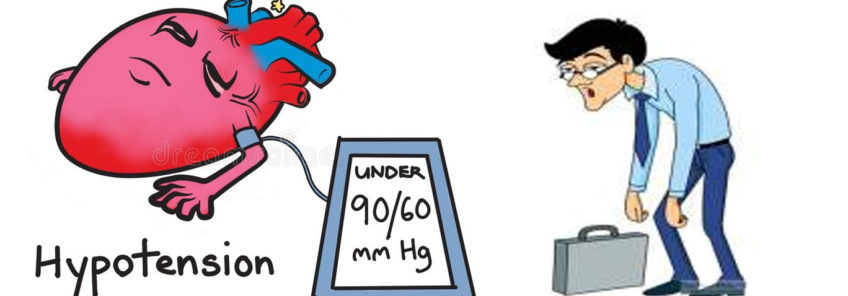
- Large amounts of blood loss through injury or due to the problem of anemia.
- Dehydration or loss of fluid due to dysentry or diarrhea.
- Pregnancy where growing fetus demands more blood from mother.
- Impaired circulation of blood caused by heart attacks or faulty heart valves.
- Anaphylactic shock, a severe form of allergic reaction.
- Infections of the bloodstream.
- Endocrine disorders such as diabetes and thyroid disease.
- Medications like beta-blockers and nitroglycerin.
- Use of diuretics, tricyclic antidepressants and erectile dysfunction drugs.
- Fatigue
- Lightheadedness
- Dizziness
- Nausea
- Clammy skin
- Depression
- Loss of consciousness
- Blurry vision
- Blood tests : It gives information of blood sugar, RBC count, sodium and potassium level.
- ECG test : It detects irregularities in heart rhythm which gives idea of structural abnormalities of heart and problems with the supply of blood and oxygen.
- Echocardiogram : This exam shows detailed images of heart’s structure and function.
- Stress test : Walking on a treadmill will give stress test which reveals the blood pressure when heart is working harder.
- Drinking more water.
- Transfusion of blood if anemia or loss of blood due to haemorrhage.
- Using more salt in regular diet.
- Medications : There are several medications which boost up blood pressure. Doctor will use such medications according to patient’s requirement.
Introduction :
The pressure exerted by the blood on the wall of the blood vessels while circulation is known as blood pressure. There are two readings of blood pressure- Systolic and diastolic. Systolic is the pressure exerted while heart contracts and pushes the blood to the vessels and diastolic is the pressure exerted while heart relaxes and blood enteres into the heart. An adult and healthy person should have systolic pressure 120-125 and diastolic pressure 75-80.
If the pressure is continuously below than 120/80 or even less than 90/60, then that is the symptom of low blood pressure. It is medically known as hypotension. It is more dangerous when the pressure falls abruptly than continuous falling.
Generally, hypotension isn’t taken as a big problem like hypertension. Eventhough, if hypotension is regular and effects in daily works, then it is also a serious problem. During child-age the low blood pressure is normal but during adult-old age by virtue of the low blood pressure the sufficient supply of oxygen and nutrients to brain, heart and other organs of the body maybe impossible.
Causes of hypotension :
Certain conditions which cause prolonged periods of hypotension is dangerous if left untreated. These conditions include :
Symptoms of hypotension :
Problematic hypotension may give unpleasant symptoms to the patient. Like :
Diagnosis of hypotension :
A sphygmomanometer is a standard device for measuring blood pressure. If the person is experiencing the symptoms as mentioned above and the measurement of blood pressure with sphygmomanometer shows 90/60 mm of Hg or less then it is diagnosed as hypotension. After finding low readings of blood pressure, the goal of diagnosis should be to findout the underlying cause. Doctor might recomment the following tests :
Treatment of hypotension :
The treatment of hypotension depends upon the underlying cause of hypotension. Treatment may include medications for heart disease, diabetes or other infection. The measures of treatment of hypotension is listed below :



Send us your feedback on this article